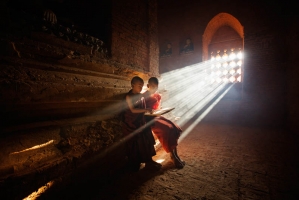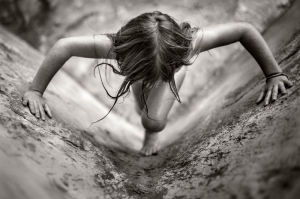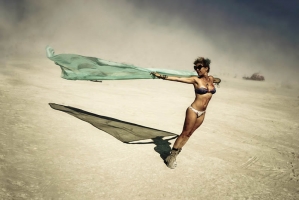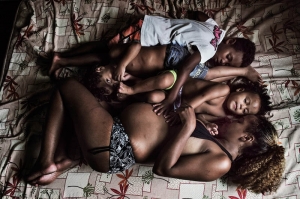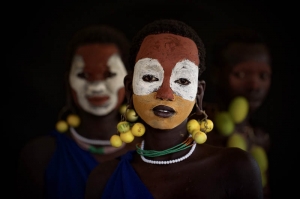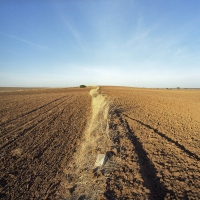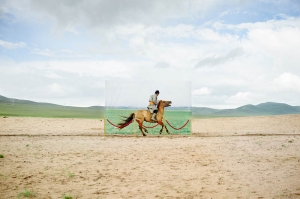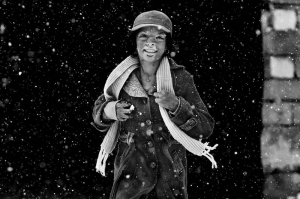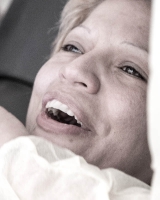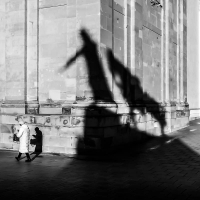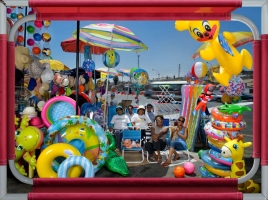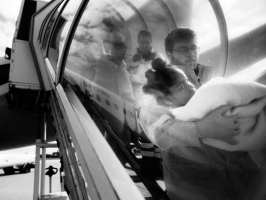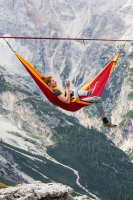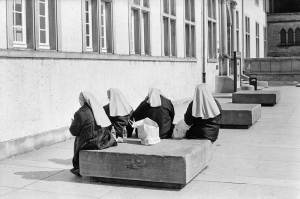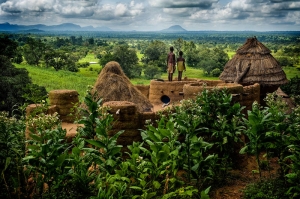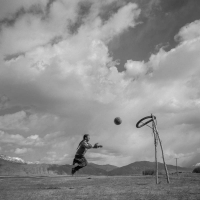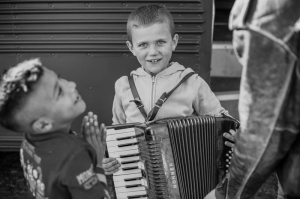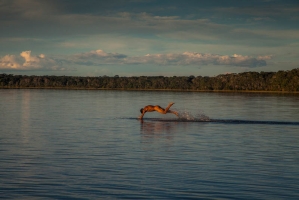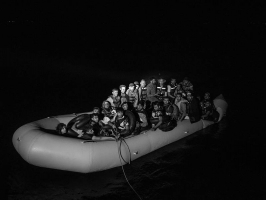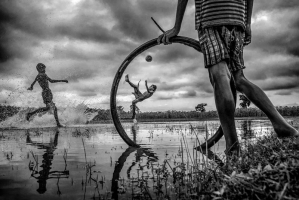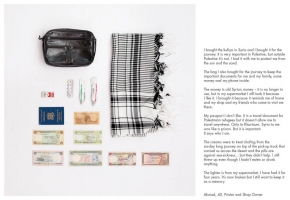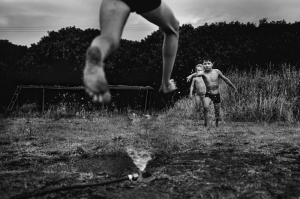The Shortlist of the Alfred Fried Photography Award 2016
Sub-Categories
-
 The Alfred Fried Photography Award 2016 received 3721 submissions with a stunning total of 16883 images!
The Alfred Fried Photography Award 2016 received 3721 submissions with a stunning total of 16883 images!
-
In the first step the international jury created a shortlist of 27 entries (stories as well as single images).
In the jury meeting at the Austrian Parliament on Friday, 1 July 2016, the jurors discussed which five shortlisted entries will be awarded the Alfred Fried Photography Award Medail. And finally, out of this five winners the overall winning image that will be named "World's Best Picture on the Theme of Peace" was defined. The winning image will be on display for one year at the Austrian Parliament and will be included in the permanent art collection of the Austrian Parliament. The winner will receive € 10.000.
The five winners were immediately informed by phone or e-mail and invited to travel to Vienna to attend the Alfred Fried Photography Award 2016 ceremony on 20 September 2016.
The winning images will be publicly announced on 21 September 2016.
The shortlist is in alphabetical order.
Click on an image to see the complete story.
-
 Feng Dawei, China
Feng Dawei, China
-
Bagan Temple Little Monk
The bagan temple has a history of hundreds of years, now Burmese monks still come to the temple to worship the Buddha and to study buddhist scriptures.
Photos by Feng Dawei
-
 Alain Laboile, France
Alain Laboile, France
-
Breaks and breaths
An intimate album documenting the life of 6 siblings, my own children, living close to nature in rural France. All are moved by a powerful energy force that transforms the everyday life into a playful world blending creativity with fantasy. At the heart of this collective whirlwind, arise invaluable moments of peace, serenity, withdrawal. Intense moments, when each exists as individual.
Photos by Alain Laboile
-
 Victor Habchy, Germany
Victor Habchy, Germany
-
Burning Man
The Burning man is a place and an event out of nowhere, lost in time and space. It is a festival gathering dreamers from all over the world seeking an intense moment of emotions. Sharing creations and ideals in this peaceful environment allows a unique experience of life. It leaves a trail of hopes and beliefs in human beings for the whole life of the ones who took part.
Photos by Victor Habchy
-
 Peter Bauza, Brazil
Peter Bauza, Brazil
-
Copacabana Palace
What the world does not see while Brazil was spending billion on infrastructure to attract global sporting events over the years and now again on the 2016 Olympics, is that Brazil still has its dark side. Despite immense anti-poverty policies that largely benefit the working class, millions of people are still homeless or are living simply in grossly inadequate housing.
This is the story of a neighborhood of „sem teto” living without secure housing. More than 300 families are living at a place called “Jambalaya”, beside many other names like “Copacabana Palace”. This is my sharing life over 7 months with them, trying to reveal their everyday life: happiness, sadness, needs, illusions,communities, strengths; giving face and voice.
Photos by Peter Bauza
-
 Robin Yong, Malaysia
Robin Yong, Malaysia
-
Flowers of Ethiopia
The Surma tribe of the Omo Valley, Ethiopia...a place where mankind probably began. The children and teens appear innocent and beautiful, with their ornate body paint work and exotic head decorations made of flowers. The place appears peaceful and untouched, but in reality, life here is harsh with the tribespeople at frequent wars with neighbouring tribes over cattle grazing rights. The line between peace and war is very fine and very blurred. They can be so near to each other, yet at times appear so far from each other...
Photos by Robin Yong
-
 Valerio Vincenzo, Netherlands
Valerio Vincenzo, Netherlands
-
Frontiers of Peace
“What is the heart of peace? A border. When two neighboring peoples make peace, they fix, first of all, the border between them.”-Uri Avnery
Europe's internal borders have radically transformed over the past century. Enemy lines from two world wars have become places of leisure and reflection. From a field of grain in Portugal-Spain to a beach boardwalk in Germany-Poland to a former Iron Curtain forest in Austria-Czech Republic, a resounding peace can be heard.
Date of project: 2007-present
Location: along the European Union's 19,500 kilometers of internal borders
Photos by Valerio Vincenzo
-
 Daesung Lee, France
Daesung Lee, France
-
Futuristic archaeology
Nomadic life has been central to traditional Mongolian culture throughout history. Even with changes brought about by urbanisation in recent years, 35% of Mongolians are living a nomadic life and thus still depend on their vast land for survival. This is increasingly difficult because their traditional way of life is now being threatened due to desertification. Potentially 75 % of Mongolian territory is at risk of desertification. This project attempts at recreating the museum diorama with actual people and their real livestock in a real place where desertified in Mongolia. This is accomplished with installing the printed photos that show ideal environment on a billboard placed in conjunction with the actual landscape horizon.
Photos by Daesung Lee
-
 Abdollah Heidari, Iran
Abdollah Heidari, Iran
-
I want my face
It has been a long time that Iranian schools burn in fire, and causes death of dozens students firing 6 schools and several teachers and burning of more than 100 students since 1997.
In a girl school of a far border village (Shin abad) in North western of Iran, defects in the heating system caused the biggest firing event in Iranian schools, which led to death of two students and sever burns of all the others. Using non-standard heating systems and oil-burning heaters are the reasons of burning schools in Iran.
They try to regain the previous friendly relations with their parents and burned classmates with intimate actions such as, making a sense of closeness to the others, and the ability to develop deep relationships with other people.
Photos by Abdollah Heidari
-
 Hernan Churba, Argentina
Hernan Churba, Argentina
-
Love At First Sight
Love at First Sight is a project that portrays the very first eye contact of a mother with her just newborn baby, the first time of thousands in the future, taken in Ramon Sarda Maternity, a public hospital in Buenos Aires City.
Photos by Hernan Churba
-
 Edgaras Vaicikevicius, Lithuania
Edgaras Vaicikevicius, Lithuania
-
Man in the city
What is a city? The city is a rush, speed, noise. The city is a place where many people live. The city connect these people. But we become individually in the city.
We are all together and at the same time, we are all one by one. Each of us live our lives in which we invite other people... or not.
A man and a city, the city and the man. They are always together. They are inseparable. The man is necessary detail of the city. The city is a big puzzle, and the man is the detail that makes this whole puzzle.
We can not live outside the city, and the city can not live without us. What is a city? It's a small world with his rate and rules. What is a man? It's a small world with his thoughts and feelings.
Photos by Edgaras Vaicikevicius
-
 Jaime Travezan, United Kingdom
Jaime Travezan, United Kingdom
-
Mírame, Lima (See me, Lima)
Mírame, Lima is a series of family portraits aiming to reflect the cultural, ethnical, religious diversities present within the Peruvian capital. Partly as a result of insecurity, street violence and lack of information, people tend to live isolated, afraid from each other, in small groups from which they rarely emerge.
With this project we would like to help to get to know each other better, to encourage integration and respect between citizens and to do so with a positive, optimistic tone in order to avoid conflict and controversy and live in a peaceful environment. We framed each portrait with a window as an invitation to pry into the other people’s world.
Photos: Jaime Travezan & Morgana Vargas Llosa.
Art Direction: David Tortora
-
 Toby Binder, Germany
Toby Binder, Germany
-
Peace Village and its children
„Peace Village International“ was established in 1967 to help children in areas of war and crisis.
The innocent victims of war deserve immediate help, unfettered by "red tape." For many young victims of war and crisis situations, medical treatment in Europe is often their last chance for survival.
„Peace Village International“ provides medical treatment to sick and wounded children who can no longer be cared for in their native countries. The children come to Germany to be treated in European clinics and hospitals. After that, the children are brought to the premises of „Peace Village“ for a rehabilitation program including time for sports, play and recreation. Children from approx. ten different countries live together here.
Photos by Toby Binder
-
 Sebastian Wahlhuetter, Austria
Sebastian Wahlhuetter, Austria
-
Rainbow of Peace
Dedicated athletes gathering every year at Monte Piana in the Italian Dolomites 2400 m. a. s. l. for a special event – a collective hammock gathering in airy heights.
The idea developed over the last years and took place with different set ups. Over all it has one common purpose: It is a symbol of peace and a tribute to remind of and commemorate the past.
The area is an open air museum to honor the memory of the 18.000 young soldiers who died here during the First World War.
The photographic documentation shows images from the last two years. At last years event 26 people gathered in a special rainbow colored set up of 17 hammocks.
Photos by Sebastian Wahlhuetter
-
 Georg Worecki, Luxembourg
Georg Worecki, Luxembourg
-
Small Pieces of Peace
The "Small Pieces of Peace" were taken in Germany & Luxembourg. Today these countries should really represent exemplarily the creation of models for a culture of peace.
Peace = absence of violence
This means: Life in an atmosphere of peace, in which personal attitudes, patterns of beliefs, behaviors & styles have been overcome, which justify the use of violence in all human fields of activity. Peace is not a condition, but a process of decreasing violence & increasing justice.
This means: Every country, every human community has to redefine the "Roadmap of Peace" in ever new nuances every day, because peace is always in danger & conditions once achieved are reversible.
Photos by Georg Worecki
-
 Antonio Aragon Renuncio, Nicaragua
Antonio Aragon Renuncio, Nicaragua
-
Somba
In Togo, inside of this beautiful and unknown country, there is an enchanted valley where time stopped centuries ago. In Atakora Mountains. The home of Tamberma tribe. Traditional houses, fetishes, ancestral spirits, bows and arrows... pure nature.
Inside mud houses -their fortress- were found the victims. In need to protection, this people have been fighting against neighbouring tribes. All for 1 cause, slavery. They´ve had a single option: fight for the freedom and peace.
Now they live searching the balance. Perfect for themselves and for the environment. Permanent serenity. Enjoying the family, the sun, the moon and the stars. Living with Mother Nature, protecting the environment, preserving their identity… seeking a permanent peace.
Photos by Antonio Aragon Renuncio
-
 Fan Li, France
Fan Li, France
-
Tajiks on the Pamir Plateau
These photos document the life of Tajiks living in the Tashkurghan Autonomous County in Xinjiang, China. Life is hard in this cold place on the Pamirs where there are vast stretches of the Gobi Desert. Tajiks have been living a semi-nomadic life here for generations, mainly relying on livestock raising for a tenacious survival.
Photos by Fan Li
-
 Darian Weiß, Germany
Darian Weiß, Germany
-
The children of Clausmoorhof
Like every Friday, musician Volker Schlag drove with his American schoolbus to the Clausmoorhof, a refugee camp in Gifhorn, Lower-Saxony, Germany. He brought guitars, drums and an accordion which used to belong to his grandmother.
For more than a year he tries to give the children living there a relief. Most of the kids came with her parents from the Balkan States and can't speak German. Most of them also can't play an instrument. But they don't mind, you can see the joy in their faces.
Photos by Darian Weiß
-
 Ricardo Teles, Brazil
Ricardo Teles, Brazil
-
The Waters of the Kamayurás
In Xingu, midwest Brazil, the largest indigenous reserve in the world, the Kamayurás begin to walk towards Ypawu lake for their first bathing before sunrise. Several bathing sessions are going to be repeated daily until sunset. These waters are a link to their ancestors and keeping them pure is a sacred ritual. The lake is their most important source of food, and also the essence of their culture.
The Kamayura´s creation myth tells about a magic bird that, in a dispute with a tribesman, threw up the water that formed the lake and also buried the residents. Since then, it has become an enchanted place, and its water and plants a source of strength for the Kamayurás.
Photos by Ricardo Teles
-
 Enri Canaj, Greece
Enri Canaj, Greece
-
The wind cries war
Since the civil war in Syria and situation in middle east gets worst day by day, the number of refugees and immigrants increases. Greece is the entrance point for these people who try to reach Europe. Nowadays 80 percent of the refugees coming to Greece are from Syria. Unfortunately, many of them never completed their trip. They drowned in the Mediterranean Sea.
Lesbos is on the front line of this wave of arrivals. But Greece is only their first station. No one wants to stay here. Their goal is to reach west Europe, specially Germany. After a few days in Greece their odyssey continues toward North Greece. Refugees second station is Macedonia, immediately after cams Serbia, Croatia, Slovenia and Germany last.
Photos by Enri Canaj
-
 Sujan Sarkar, India
Sujan Sarkar, India
-
The Young Dreamers
If our youth arise and act, they have the strength and dynamism to generate a huge transformation in the society. Given the freedom to achieve and guided properly, the youth power has the potential to even accomplish the goal of transforming a developing nation into a developed nation. Their young, constructive ideas and solutions can break the barriers, solve the serious problems of our society and unblock the way to a better and peaceful world.
Photos by Sujan Sarkar
-
 Kiki Streitberger, United Kingdom
Kiki Streitberger, United Kingdom
-
Travelling Light
In 2015, nearly 200,000 refugees undertook the perilous journey across the Mediterranean to Italy. Syrians call it 'The Journey of Death'. For a lot of money, they put their lives and those of their families into the hands of smugglers, who promise to take them across the sea. Crammed into small, unseaworthy boats - often for many hours, if not days, without food and drinking water - they hold out in the hope that they will get rescued before the boat gives in.
Who are the people that risk their lives in the Mediterranean? I wanted to know what people, who leave everything behind to embark on such a gruelling journey, manage to take over into a new life, and what these items mean to them.
Photos by Kiki Streitberger
-
 Niki Boon, New Zealand
Niki Boon, New Zealand
-
Wild and free
We live a simple life in rural New Zealand, what may seem like an unconventional lifestyle to some with alternative education and life without TV or modern electronic devices. I document our days, together, in an environment full of nature and uninhibited play.
A physical record of their childhood, life as it is, the real, a reflection of a childhood rooted deep in my own past,a most sincere place of freedom, that I now pass on to my own children. Although deeply personal I hope that others will also connect with their own childhood.
I believe my children are right where they belong covered in mud, running and living through nature, wild and free and earth connected in a way where the landscape begins and their little souls end.
Photos by Niki Boon
